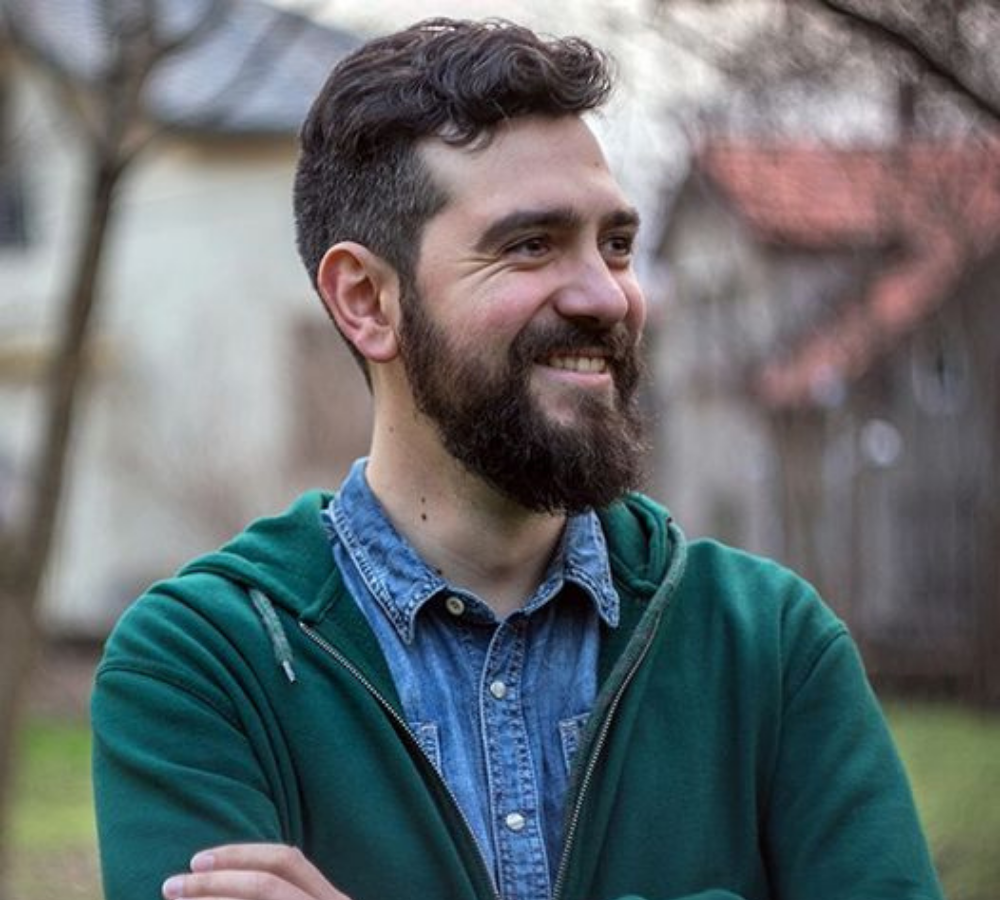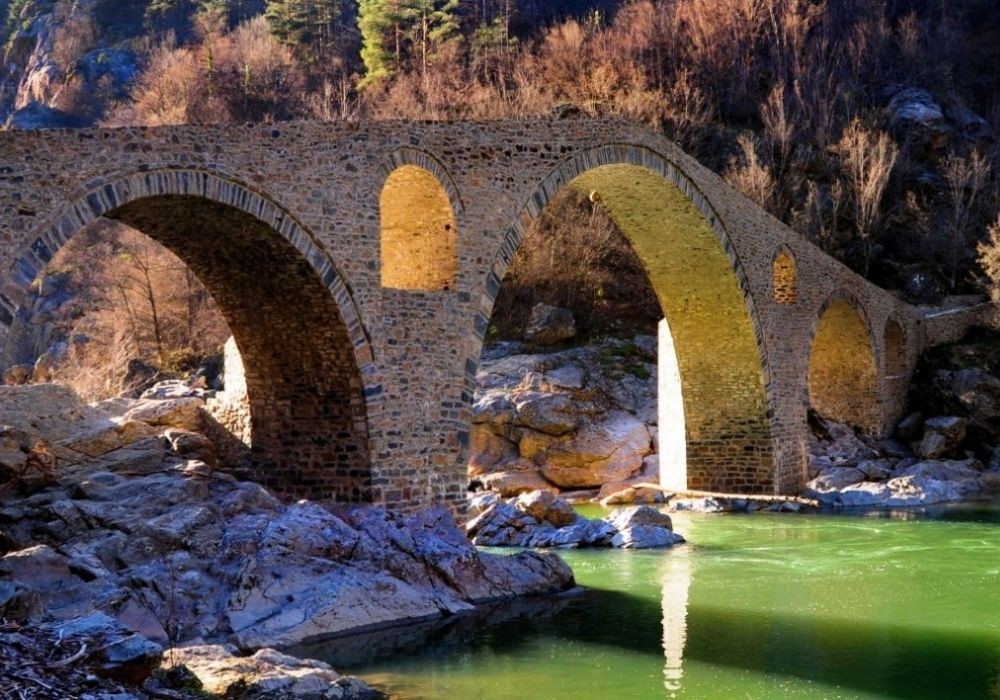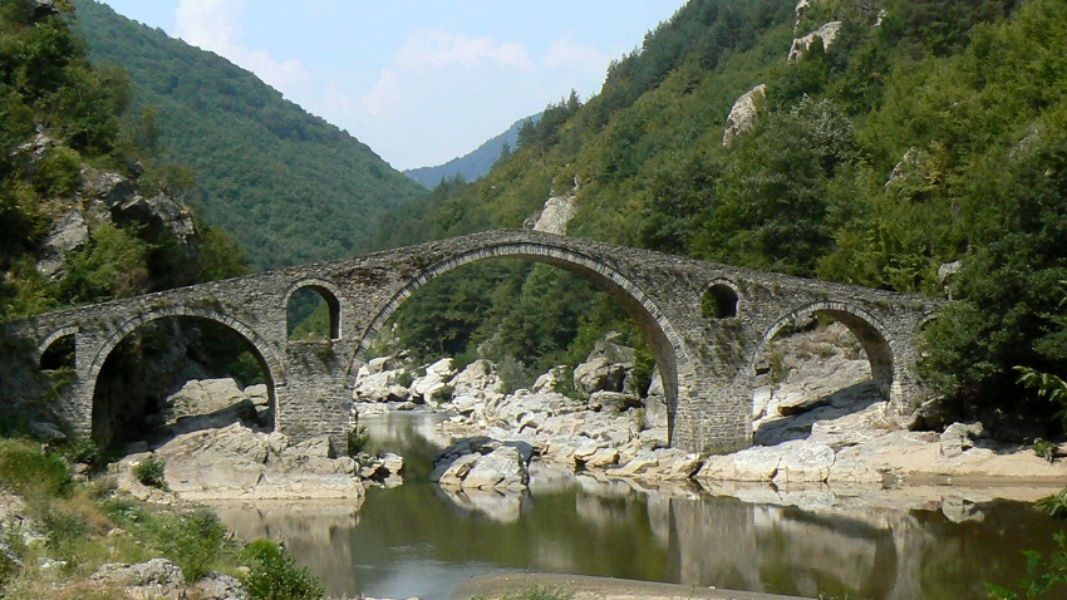Their stone feet firmly on the ground, the stone bridges of the Rhodopes, rising above the bodies of water in the mountain, have seen history unfold and have their own stories to tell.
Though they are frequently called “Roman” the bridges in the Rhodope Mountain were, in fact, most probably built in the Middle Ages, when the road to Gumulcine, now Komotini in Northern Greece and the Aegean coast, passed across the river Arda and its tributaries, Ivan Balkanski writes in his book “Old bridges in Kurdzhali district”. Now, the association Meshtra has undertaken to shed light on the secrets they hold. At the end of the month the association is to carry out field research in the mountain. Arda River is the centre around which the bigger bridges were built.
“These sites are not well studied – there is no reliable information or documents about their construction and maintenance, about the people who created them,” says the project’s leader architect Ivan Kolev.

“It is fascinating to see how the bridges were built as an integrated system for crossing big water barriers in the Rhodopes. In this sense it is interesting to know whether they really were part of a general plan, or whether each was erected at different times and on different occasions. But there is one thing that is very noticeable – if we take a look at the map of the Rhodopes and Arda River we shall see that the big bridges are approximately equally spaced. And that, I think means that they are part of a carefully planned system, and by analyzing it we shall prove this idea.”
Meshtra, together with the Museum of History in Ardino, the Regional Museum of History in Kurdzhali and volunteers will check to see what state the stone bridges are in, whether they have retained their original appearance or whether there have been any transformations. They will work in Ardino, Kurdzhali and Smolyan where there are more than 100 bridges. Data will be put together for each one of them – current and archive data, analysis of their present condition and of their authenticity. All of this information will be made available on a designated website, and will, in future, be used in their restoration.
“The reason why these bridges are so well preserved is that they are in fact a design people have been familiar with since ancient times up until very recently,” architect Ivan Kolev says. “And that means that up until the industrial revolution practically the same systems of construction were used, and they underwent constant improvement. The bridges in the Rhodopes are among the last examples of this kind of architecture, before the appearance of metal and then concrete bridges. That is why it can be said that they are enduring precisely because of the accumulation of knowledge and technologies over many centuries.”

There is one bridge that is regarded as the emblem of the Rhodopes – the Devil’s Bridge over the Arda. It has three arches, is 66 m. long, 3.4 m. wide and 12 m. high. It was built in the 16th century by order of Sultan Selim I and the process of its construction is shrouded in legend. According to one of these legends the bridge was built by master builder Dimitar from Nedelino who agreed to erect a bridge over the swift-flowing river even though all who had tried before him had failed. The Devil promised to give him the secret of building a bridge in 40 days that will last forever. Unfortunately, the master builder was unable to enjoy the magnificent fruit of the labour of his hands because soon after, he died. Another legend has it that from the Devil’s Bridge you can see the face of Satan if you look into the river’s waters between 11 and 12 o’clock, when the bridge and its reflection form a circle. And if you look closely, on one of the stones, you will see the Devil’s hoofprint.

Interview by BNR’s Hristo Botev channel
Editing by Diana Tsankova
Photos: archive, Association MeshtraOn 20 April, all Christians will celebrate the Resurrection of Christ. Against the backdrop of our divided and troubled world, Catholics, together with Orthodox Christians, Armenians and Protestants, will send a message of hope and share the joy of the..
Holy Saturday services begin on Friday evening with Vespers. The Church commemorates the burial of Christ the Saviour and His descent into hell to save the righteous who had died before His work of redemption. Joseph of Arimathea and Nicodemus, with..
On Good Friday, the saddest day for Christians, the liturgy commemorates the suffering, crucifixion and death of Jesus Christ, who sacrificed himself for the guilt and sins of humanity. The service at the Metropolitan Cathedral "St. Nedelya" in..
A gold coin minted during the reign of Emperor Justinian I, ruler of the Eastern Roman Empire, was discovered during excavations at the Tuida Fortress..
Elena is the wife of Father Ivan Karageorgiev, a Bulgarian Orthodox priest based in Paris. She has lived in the French capital since 2010. Elena grew..

+359 2 9336 661
